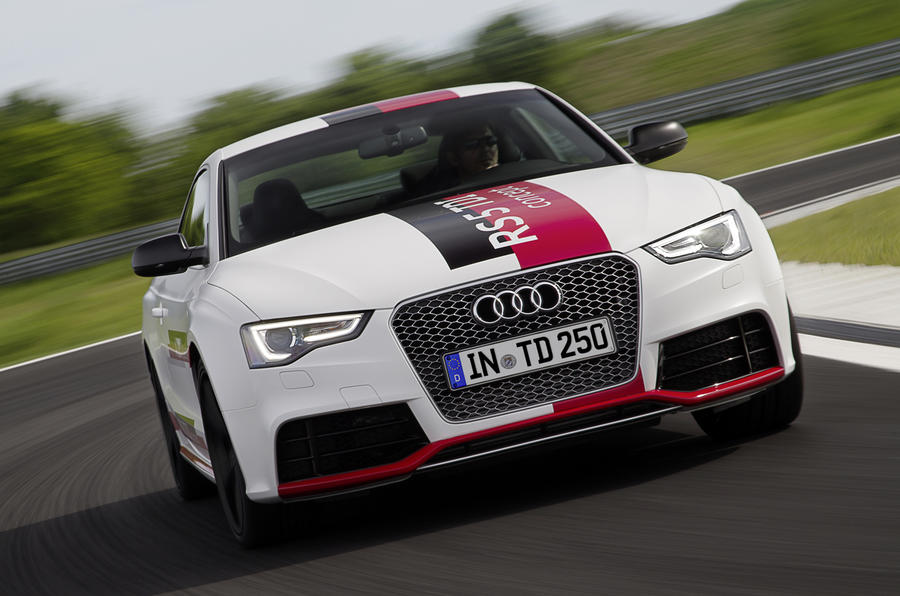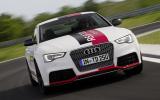What is it?
A late-stage prototype Audi RS5, fitted with a very potent ‘e-boost’ version of the next-generation Audi 3.0-litre V6 two-stage turbodiesel engine.
The new engine weighs 192kg, somewhat lighter than the previous version, and will arrive first this summer in the newly facelifted A6 and A7 in 215bhp and 268bhp forms. This 380bhp prototype, however, is expected to go into production next year, possibly as the first-ever Audi RS diesel.
Like many of today’s higher-end diesel engines, the new unit uses two-stage turbocharging. The smaller of the two is lighter and easier to spin up, and is intended to give the engine more grunt at lower engine speeds. The bigger turbo takes over at higher speeds.
The engine we’ve driven here is, however, something of a landmark design in that it uses electrical assistance to ensure that the smaller of the two turbochargers is spinning quickly enough to be active even at very low engine speeds.
In simple terms, Audi engineers have added an electrically powered blower to the engine’s induction system, which, at very low engine speeds, forces air into the induction system, spinning the smaller turbo into life.
This ‘e-booster’ is connected to the engine’s intercooler on one side and to the induction system on the other, pushing air through the smaller turbocharger impeller between start-up and 3000rpm. At higher speeds, the e-booster is bypassed entirely.
The e-booster is also intended to keep the engine on boil on, say, twisty back roads. Typically with diesel engines, braking for a corner also slows the engine and bleeds off boost. This results in slower acceleration out of the same corner while the engine spins up enough to get the turbos back on boost.
But fitted with this new e-booster, the engine’s turbochargers can be primed while the driver is still braking, so that full torque is available virtually immediately the driver gets back on the gas.
Although Audi engineers experimented with turbocharger units that were driven directly by an electric motor, they decided not to pursue the design because it resulted in extra inertia, which, ironically, slowed the turbocharger response times.
The e-booster is powered by its own 48v electrical system, while the rest of the car uses a conventional 12v electrical system.

































Join the debate
Add your comment
Throttle valve?
DIESEL THROTTLES.
BMW Valvetronic engines have (or at least had) such a throttle valve as an emergency back-up in case the Valvetronic system failed.
TURBO-COMPOUNDED CARS?
I love this idea, BMW should